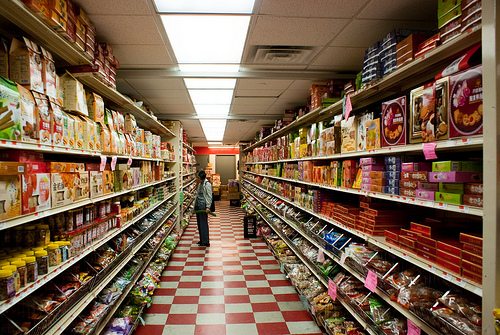

Economy
Understanding desire: how brands can respond to what people want
With the launch of her book, Anna Simpson proposes a new role for brands: not manufacturing desire through clever campaigns, but responding to it with integrity.
When we’re looking for a solution, more often than not we head to the shops.
We don’t necessarily know what it is we want to find, but we feel there is something out there that could help us move from the place we’re in to another place, which would be better.
This momentum to look for something, which is what I understand by ‘desire’, raises itself in our hearts and minds like a question. The role of brands is to offer a response.
Unfortunately, many of the things we buy are actually very poor responses to our desires. Around 30% of the clothes we purchase in the UK sit in our wardrobes, having never been worn. Many snacks offer only a sugar high, and very little of substance.
Some items, from cars to handbags, are sold to us to gratify our desire for status, but the result is only that we carry a sign that seems to cry out ‘Respect me!’, something very different to earning that respect by living well.
That said, some things satisfy multiple desires. A tasty meal enjoyed with friends and family in a beautiful setting doesn’t just meet the need for food, but responds to our desire for community, for an experience enhanced by our senses, and for a cultural adventure.
In the case of Jamie Oliver’s restaurant Fifteen – which offers young people from disadvantaged backgrounds the opportunity to train as chefs – a meal might contribute to our desire to act with purpose, making a difference beyond our own lives.
The failure of brands to question how well their propositions address what people really want is a problem. It’s a problem for our cluttered lives, for our constrained resources – from water to energy to land – and, ultimately, for our climate. It’s also a big problem for brands, because it leaves them in short-term relationships with their audience. When a better solution beckons, we follow it.
Take HMV – very much a household name with a long history. But in the end, it failed to see that people didn’t want a shelf of CDs – but the ability to listen to music at will. HMV lost out to Spotify and iTunes, because it failed to add value beyond its outdated stock.
Many familiar high-street brands have met a similar end in recent years. A study by Havas Media found that most people wouldn’t care if more than 73% of them disappeared altogether.
Turning the game on its head
There is a huge opportunity for brands that can turn this game on its head. The task of marketers used to be to create desire for products. The product came first, and the desire for it after. As the founder of Revlon said, “In the factory we make cosmetics. In the drugstore we sell hope.”
If you set out with integrity to bring hope to people’s lives, I doubt you’ll land on lipstick as the best way forward.
Now, things are changing. Brands need to create propositions (and not necessarily products) which respond to what people actually want. To do this, they need to develop a better understanding of desire, and ask what role they could play in meeting it.
If brands can help people to find what they desire – without eroding the social, economic and environmental capital on which their long-term proposition depends –they will build stronger relationships with their audience, laying the foundation for many generations to come.
And on the way, they will find fresh impetus for innovation.
My book, The Brand Strategist’s Guide to Desire, offers brands a way to understand what people really want. In the five chapters, I explore:
– the desire for community, that is for belonging, and not just belongings – and for exchange, not just trade
– the desire for adventure, that is, to challenge ourselves through new experiences, and to grow and learn through them
– the desire for aesthetics, that is, to appreciate the world through our senses, and to develop our tastes
– the desire for vitality, which stretches beyond health to encompass the love of life and the motivation to live to the full
– and finally, the desire for purpose: to give life meaning
Brands need to think of people not just as customers, but as agents, with their own goals to pursue. A study by Edelman found that 79% of consumers in India “want brands to make it easier for them to make a positive difference in the world”. For this rapidly growing middle class, consumerism is not an end in itself, but a means to greater social freedom. If brands can recognise and respond to the desires of their audience, then they will also be valued.
How brands can respond to desire
Each chapter includes three case studies, showing how brands can respond in authentic ways to these desires.
Heineken is featured in the chapter on community. People often assume that if you pay to be part of a community, your experience will be less authentic. This isn’t necessarily the case. All communities require some infrastructure: a place to meet (from public parks to pubs), a ritual activity (from karaoke to tea ceremonies), even a uniform (from scouts to football scarves). Heineken wouldn’t have much of a future without pub culture – and this culture depends largely on the people running the pubs. It established a leasing scheme to support community members to run their own local.
So when Graham Anderson from Bristol – who’d worked in pubs for over 15 years – decided there was a massive gap in his neighbourhood for a quality local serving great food, he went to Heineken and revamped the Eastfield Inn. It has great reviews from locals, including the cricket club – probably because he offers a free ‘man of the match’ pint. He also sources local food, hosts Bristol’s bands, and has even set up a skittle league. Last year, Heineken won a Business in the Community Award for the scheme.
Ella’s Kitchen is featured in the chapter on aesthetics. Not only does it offer quality, organic food and recipes to help parents wean their kids – but it aims to start children off on a journey to explore all five of their senses. Through games, songs and activities, they are encouraged to appreciate the textures, colours and even sounds of the ingredients. This way they develop their tastes, and learn to love family meal times.
It was set up by a dad who had difficulty weaning his own daughter. His team works closely with parents and little ones to find out what tastes good, and ask what support they can offer to make meals fun. Ella’s Kitchen has won many awards, from best taste to practical parenting.
Zumba is featured in the chapter on vitality. It’s basically a fitness class, but with the emphasis more on fun than fitness, and on the music rather than your muscles. Like the Samba Schools of Brazil, Zumba offers an inclusive, community-based party. It’s a celebration of life, a mini carnival in a gym.
The brand offers vitality, regardless of age. Three-year-olds can go along to Zumba to ‘wiggle, sing and learn’ with their mums and dads. Teenagers can go to build their confidence and improve their coordination. Older people can stay active in a welcoming community space, without putting too much strain on their joints.
Zumba started by accident in a gym in Columbia: the teacher forgot his CD and so put on the music he actually listens to instead! It turned out he wasn’t the only one to like a party. Today, his dance classes reach 14 million people in 151 countries, partly because the classes are infectious, but also because the brand is easily franchised, supporting communities to make it their own.
What can you do next?
Read the book, enjoy it, and if you would like to explore your brand’s future, then contact Gemma Adams at Forum for the Future, and get involved in the Brands Roundtable.
I’ll also be hosting an event, ‘A brand vehicle named Desire’, on May 1 with the consultancy Glasshouse, and I’m speaking at the Sustainability Communications Forum on May 22.
Anna Simpson is editor of Green Futures and author of The Brand Strategist’s Guide to Desire, which is available to purchase here. Blue & Green Tomorrow readers can enjoy a 20% discount with the code WORLDPALGRAVE20.
Further reading:
People love brands – but wouldn’t care if 73% disappear tomorrow
What’s in a box? A tale of mass production
Consuming nothing to consume everything
































